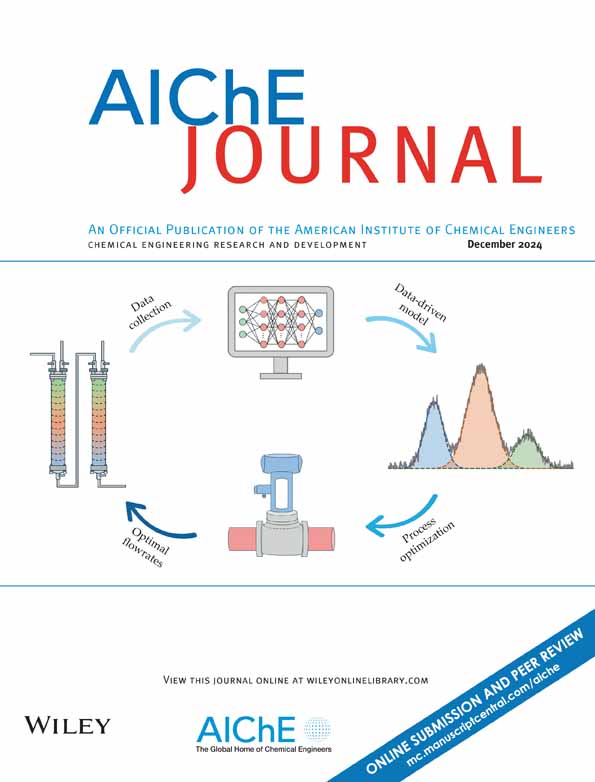利用计算流体动力学建模超低温霜形成的新方法
IF 3.5
3区 工程技术
Q2 ENGINEERING, CHEMICAL
引用次数: 0
摘要
本研究提出了一种用于预测超低温(低于- 100°C)的计算流体动力学模型的发展。霜的形成率是用无量纲数从操作条件得出的特征。为了更好地捕捉超低温结霜的潜在物理现象,引入并系统地调整了各种物理参数。此外,为了提高模型的准确性,还纳入了一个在现有研究中经常被忽视的冰沉积模型。分析了各参数对预测霜厚的影响,并与实验数据进行了对比验证。利用所建立的模型,研究了工况对结霜生长的影响。不同条件下霜冻生长的预测趋势与实验观测结果吻合较好。该模型为在不同操作条件下模拟更复杂几何形状的超低霜形成奠定了基础。本文章由计算机程序翻译,如有差异,请以英文原文为准。
Novel approach to modeling ultra‐low temperature frost formation using Computational Fluid Dynamics
This study presents the development of a computational fluid dynamics model for predicting ultra‐low temperatures (less than −100°C). The frost formation rate was characterized using dimensionless numbers derived from operating conditions. To better capture the underlying physical phenomena of ultra‐low temperature frosting, various physical parameters were introduced and systematically adjusted. Additionally, an ice deposition model—often overlooked in existing studies—was incorporated to enhance the model's accuracy. The influence of each parameter on predicted frost thickness was analyzed, and the simulation results were validated against experimental data. Using the established model, the impact of operating conditions on frost growth was investigated. The predicted trends in frost growth under varying conditions showed strong agreement with experimental observations. This model lays the foundation for simulating ultra‐low frost formation in more complex geometries at different operating conditions.
求助全文
通过发布文献求助,成功后即可免费获取论文全文。
去求助
来源期刊

AIChE Journal
工程技术-工程:化工
CiteScore
7.10
自引率
10.80%
发文量
411
审稿时长
3.6 months
期刊介绍:
The AIChE Journal is the premier research monthly in chemical engineering and related fields. This peer-reviewed and broad-based journal reports on the most important and latest technological advances in core areas of chemical engineering as well as in other relevant engineering disciplines. To keep abreast with the progressive outlook of the profession, the Journal has been expanding the scope of its editorial contents to include such fast developing areas as biotechnology, electrochemical engineering, and environmental engineering.
The AIChE Journal is indeed the global communications vehicle for the world-renowned researchers to exchange top-notch research findings with one another. Subscribing to the AIChE Journal is like having immediate access to nine topical journals in the field.
Articles are categorized according to the following topical areas:
Biomolecular Engineering, Bioengineering, Biochemicals, Biofuels, and Food
Inorganic Materials: Synthesis and Processing
Particle Technology and Fluidization
Process Systems Engineering
Reaction Engineering, Kinetics and Catalysis
Separations: Materials, Devices and Processes
Soft Materials: Synthesis, Processing and Products
Thermodynamics and Molecular-Scale Phenomena
Transport Phenomena and Fluid Mechanics.
 求助内容:
求助内容: 应助结果提醒方式:
应助结果提醒方式:


